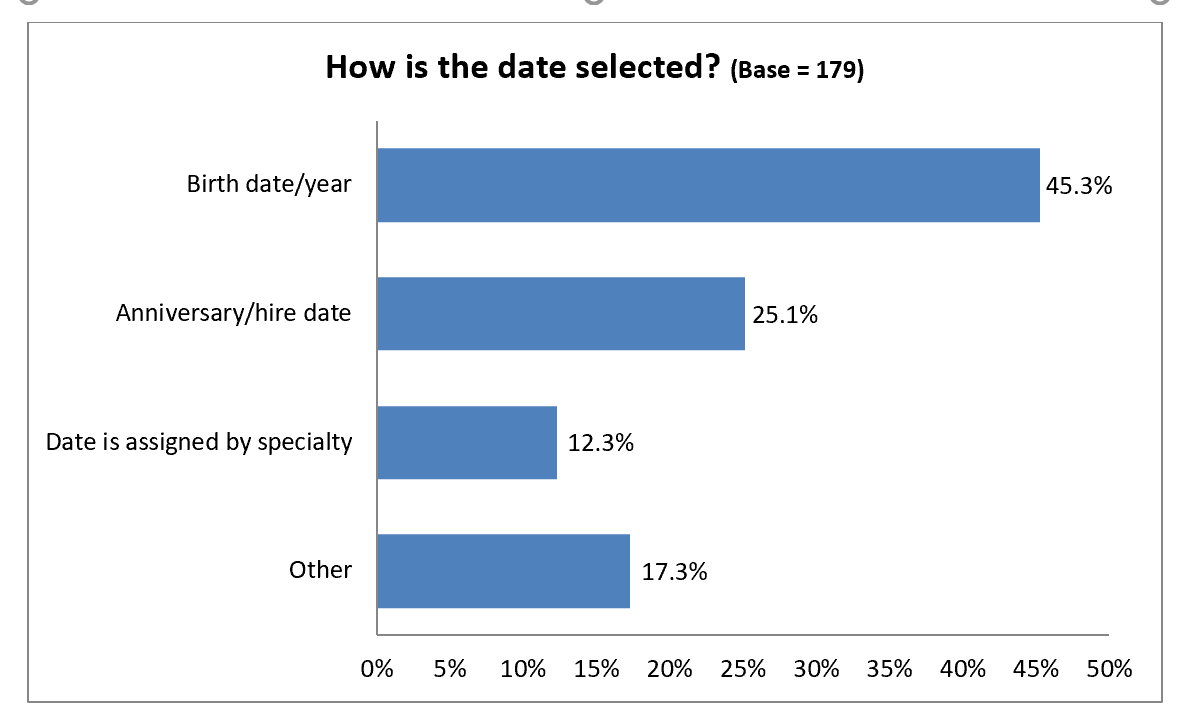
At VerityStream, the consulting practice works with many organizations on implementation of new software. We also work with current customers on implementation of best practices in how software is used.
One of the best practices related to credentialing operations is establishing a provider-centric reappointment date (also known as a system reappointment date) in a multi-hospital (health system) environment.
What is a provider-centric reappointment date? It means that when a provider is scheduled to be reappointed, he/she is reappointed at all facilities within the health system where he/she holds membership and/or privileges. A provider-centric date will enable the provider to complete one application for all facilities and organizations. And – if the healthcare system has standardized their privilege delineations, most providers will receive one privilege form, rather than separate forms for each facility.
If this is such a great idea, why don’t all health systems already have provider-centric reappointment dates?
The following data was obtained from VerityStream’s 2020 Annual Report on Medical Staff Credentialing:
- 76% of responses came from individuals who were in a multi-facility organization.
- 61% of responses reported that their organizations have a provider-centric reappointment date.
NOTE: 24% of those who responded that they are in a multi-facility organization, did not respond to the question about whether they have or do not have a provider-centric reappointment date.
- 45% of those who reported that they do have a provider-centric reappointment date use a provider’s birth date/month to calculate the reappointment date.
- 31% of those who responded to a question about privileges, reported that their organization has standardized privileges within their health system. 69% have not standardized privileges.
Observations:
- Some individuals who responded to the survey may not understand the concept of a provider-centric reappointment date and therefore did not answer the questions about whether or not they use a provider-centric reappointment date. Another potential thought is that the individuals who responded to the survey didn’t know whether or not there is a provider-centric reappointment date.
- Even though there appears to be a large number of organizations who have a provider-centric reappointment date, there still remains a significant number of organizations who do not.
- The majority of organizations that have a provider-centric date, use birth date/month to assign a reappointment date. However, there are other methods that are in use.

Recommendations to health systems:
- If you are implementing new software, use that activity to migrate to a provider-centric reappointment date.
- If you are standardizing privileges, use that activity to migrate to a provider-centric date. One of the many reasons for standardizing privileges in a health system is because providers do not like completing numerous privilege delineations – and they are particularly irritated when privilege forms from various facilities within a health system are inconsistent (different criteria, different approaches to how privileges are described, etc.).
- If you are implementing a health system Credentials Verification Office (CVO), use that activity as the catalyst for transitioning to a common reappointment date. After all, one of the common reasons that health systems establish a CVO is to eliminate duplication of effort – not only for the CVO, but for the providers.
- If you aren’t doing any of the above, consider establishing a special project to transition to a provider-centric reappointment date. This will ultimately increase provider satisfaction and will eliminate redundant activities and costs for the health system.
- Consider using birth date/month as the method of assigning a provider-centric date. It doesn’t change and it will be easier to implement and to maintain going forward.
- If you credential to meet both Joint Commission as well as NCQA requirements, use a two-year cycle for providers who must meet both standards. NCQA won’t fault you for reappointment every two years instead of every three years.
Thanks for reading! Stay safe. And – I look forward to interacting with many of you in our VerityStream Community Days!
